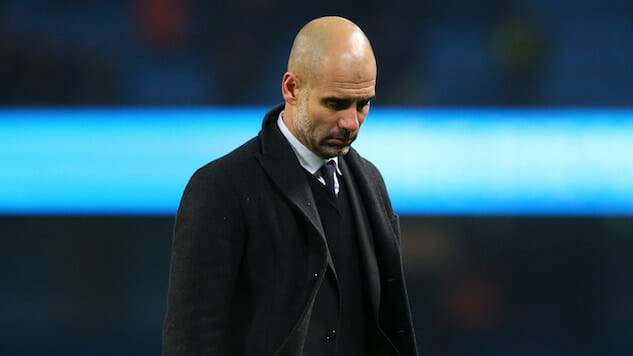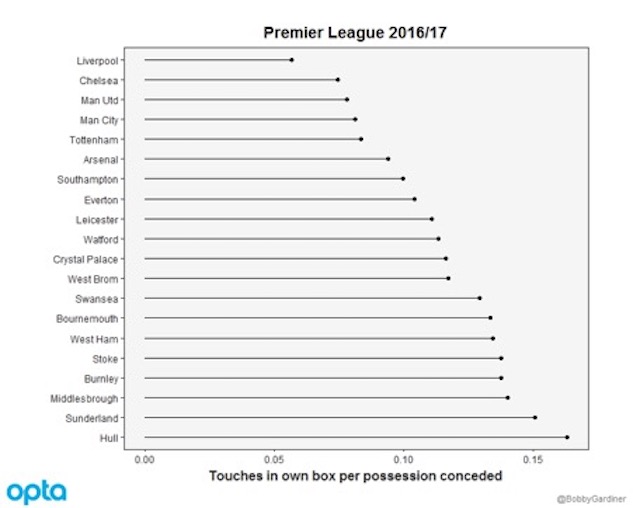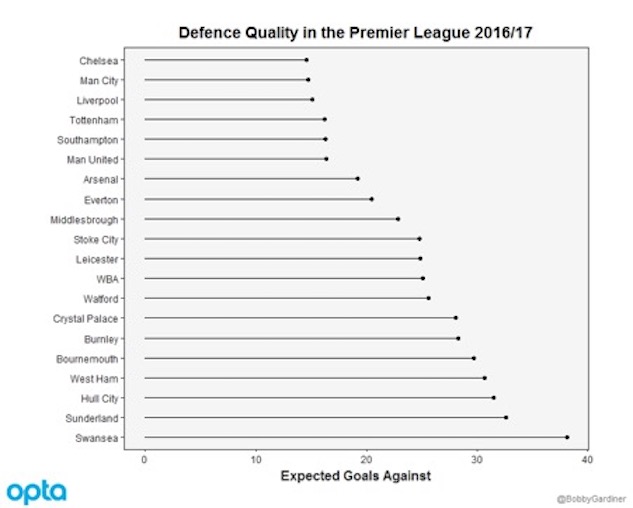Has Pep Guardiola Been Found out at Manchester City?
Photo by Alex Livesey/Getty
The Premier League has been a baptism by fire for Pep Guardiola, who took control of Manchester City at the beginning of the season. His team currently sit 5th in the league, and recently lost 4-0 to 7th place Everton. As the press, smelling blood, has become increasingly antagonistic towards Guardiola, his growing frustration is apparent, culminating in press-room blunders like this:
“In football, like in basketball and tennis, you have to put the ball inside the net and to stop the opponent from doing that.”
Claims Guardiola has been “found out” are so far based on points totals alone, which we know statistically can be misleading when it comes to longer-term outcomes. Narratives in football change from week to week, particularly in media coverage of the Premier League. But amid all the talk of where City sit in the league table, there have been few attempts to explore what Guardiola has attempted to tactically implement in his new side.
One change is that Manchester City are far more effective in how they limit opposition possessions. This tends to be a mark of a team with an organised and vigorous ‘press’, where the defensive goal is to reclaim possession of the ball as quickly as possible.


In the Premier League, Liverpool and Tottenham tend to be more known for their defensive press, and this translates well in the length of the possessions that they allow. Last season, they were top in the league respectively, with City allowing the fifth shortest possessions. This campaign, however, Guardiola’s team are second only to Liverpool.
This has resulted in City conceding the fastest possessions in the league, with each possession being 0.5 m/s faster on average than last campaign. To some extent, this is a natural consequence of the type of system – if you are hurrying your opponent on the ball, you are forcing them to attempt to attack quicker in the hope that this results in them losing the ball. Against some teams, this may play to their strengths: Leicester of last season had the shortest possessions in the league, and attacked the 4th fastest. Tottenham and Liverpool concede the next fastest possessions, and are also the teams with the most similar defensive system. Both Tottenham and City concede noticeably more touches in their own box per possession, though, than Jurgen Klopp’s Liverpool, who are remarkably proficient in this measure.

-

-

-

-

-

-

-

-

-

-

-

-

-

-

-

-

-

-

-

-

-

-

-

-

-

-

-

-

-

-

-

-

-

-

-

-

-

-

-

-











































